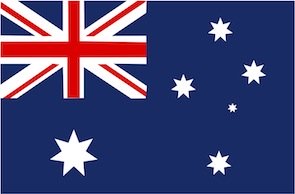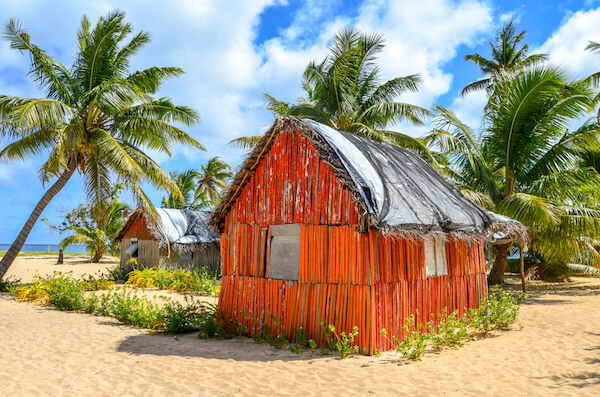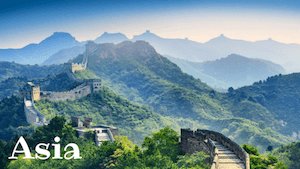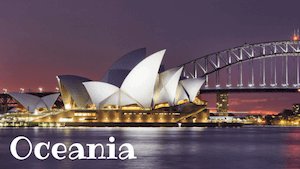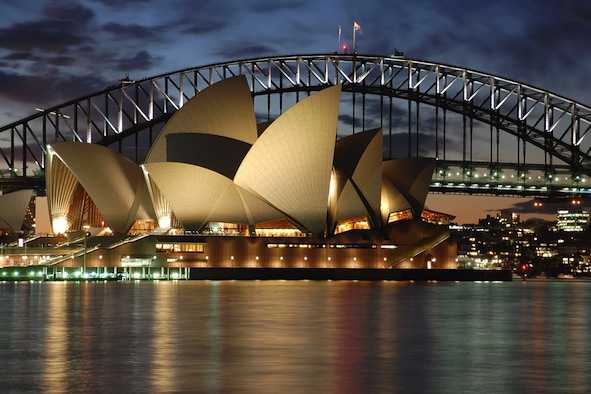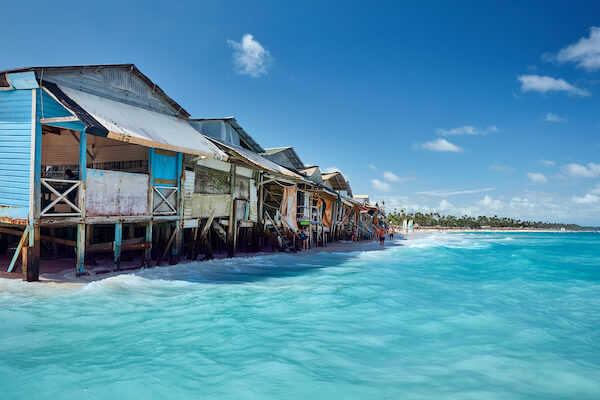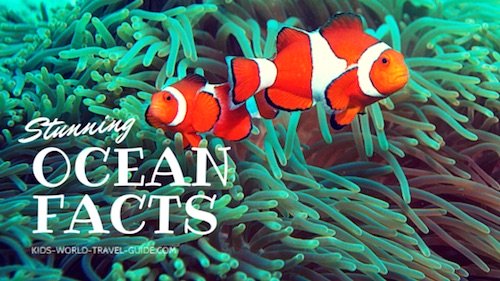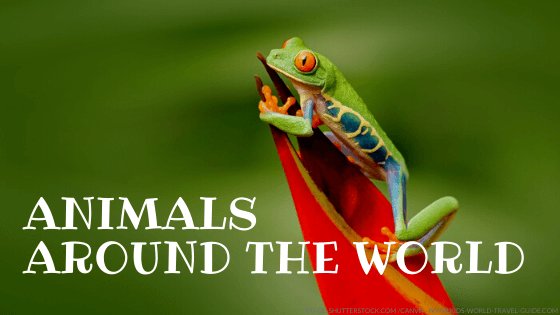- Homepage
- Australia/Oceania
Oceania Facts
Oceania - Region and
Australia - Continent Facts
Our Oceania Facts for Kids provide lots of interesting and fun facts about this part of the world. Here we combine facts about the continent Australia and include facts about the region of Oceania.
Oceania is a geographic region that includes Australia, New Zealand, and many island countries in the Pacific Ocean. Australia is also a continent and is the smallest of the seven continents on Earth by land area.
Please note:
Australia is part of Oceania and is often referred to as the name of the continent. However, when we use Oceania / Australia, we also include the many islands and countries surrounding Australia. This way, countries such as New Zealand and the Pacific island nations are included, even though they are not continents themselves in the traditional seven-continent model.
Click on the flags to learn more about the countries of Oceania! Here are the countries you will find on our guide:
 PNG PNG |
Top 15 Australia/ Oceania Facts
1. Oceania is a geographic region that includes Australia and many islands in the Pacific Ocean.
It is often described as a continental group made up of about 14 independent countries, along with several territories and dependencies.
However, Oceania is not a continent itself as the continent is called Australia. The number of countries can vary slightly depending on definitions.
Please note: Australia is often named as the continent, but if we only use the word Australia, the many islands and countries around it would not be included.
Oceania in fact covers a much wider geographic region. It includes Australia, New Zealand, and many Pacific island countries. Most of Oceania is made up of ocean, and the region spans a huge area of the Pacific Ocean, as you can see on the map above.
 Oceania/Australia
Oceania/Australia2. The largest island of the geographic region of Oceania is Australia. Read our Australia Facts here.
3. The Oceania region includes 14 countries: Australia, Micronesia, Fiji, Kiribati, Marshall Islands, Nauru, New Zealand, Palau, Papua New Guinea, Samoa, Solomon Islands, Tonga, Tuvalu and Vanuatu.
4. Oceania spreads over a vast area from 28 degrees North in the northern hemisphere to 55 degrees South in the southern hemisphere.
5. Oceania's biggest and most populous city is Sydney. More than 5 million people live in Australia's biggest city. Sydney has the most diverse and multicultural population in Oceania. More than 250 languages are spoken here.
 Sydney Skyline
Sydney Skyline6. Australia is the biggest and leading economy on the continent. New Zealand is the only other large economy on the continent. Mining, manufacturing and tourism are the main economic sectors of the region. There are six cities in Oceania with a population of more than one million inhabitants:
- Sydney (Australia): 5.3 million inhabitants
- Melbourne (Australia): 4 million inhabitants
- Brisbane (Australia): 2 million inhabitants
- Perth (Australia): 2 million inhabitants
- Auckland (New Zealand): 1.6 million inhabitants
- Adelaide (Australia): 1.3 million inhabitants
7. Highest mountain in Oceania: The highest mountain on land is Mount Cook in New Zealand. The mountain which is referred to also as Aoraki is 3,754 m/ 12,316 ft high.
 Aoraki also called Mount Cook
Aoraki also called Mount CookNew Zealand's South Island has 23 peaks that are higher than 3,000 m/ 9,800 ft. Tasman Glacier is the largest glacier in New Zealand, it is 27 km/ 16 miles long.
More Oceania Facts
8. Oceania Facts - Flora: The most diverse landscape will be found in Australia and New Zealand due to their size and the varied climatic regions in these countries. In Australia, you can encounter rainforests and deserts as well as dry forests whereas in New Zealand there are also alpine regions with only sparse vegetation, such as the Southern Alps with the glaciers. The Pacific Ocean islands have a tropical vegetation with tropical rainforests and palm trees.
 Rainforest canopy walk in Samoa
Rainforest canopy walk in Samoa9. Oceania Facts - Fauna/ Wildlife: Oceania is home to many animal species. In Australia, the largest country of the continent, you will find marsupials. Marsupials are mammals that carry their young in their pouch. Among them are kangaroos, possums, wombats and koalas. Marsupials are endemic only to Australasia and the Americas.
 Koala with young
Koala with youngA large variety of birds also live in Oceania such as the Australian kookaburra or the colourful kingfishers and the birds-of-paradise.
 Bird of Paradise in Papua
Bird of Paradise in Papua10. Oceania/Australia Climate: The climate of the region is diverse. The highest temperatures in Oceania are reached in the Australian outback with extremes of 50 °C (123 °F) and the lowest temperatures are measured in New Zealand with −25 °C (−14 °F).
 Fox Glacier in New Zealand
Fox Glacier in New ZealandAustralia has a mainly tropical climate in the northeast and arid climate in the desert centre of the country, which is referred to as 'outback'. The south eastern Australian coastline has a mild mediterranean climate.
In New Zealand, however, the climate ranges from subtropical in the North to temperate in the South, with snowfall in the higher regions of the southern island. The Pacific Ocean islands mainly have a tropical climate, so it is warm and humid all year round. In some regions in Micronesia rainfall exceeds 7,600 mm/ 299 inches per year. These are some of the wettest places in the world where there is six times more rainfall than in England.
11. Oceania Facts - Famous explorers:
- Seafarers from Europe were exploring the region in the 16th century, however, the Polynesians were the first explorers and settlers.
- Many Pacific Ocean islands such as the Marshall islands and Palau, Tuvalu and the Marquesas islands in French Polynesia were further explored by European explorers and people from many regions around the world settled later on these islands.
- For example, Spanish explorer Alonso de Salazar reached the Marshall islands in 1529, these islands were inhabited by the Micronesians already for about 3,000 years. The island of Palau was settled by Melanesians and Polynesians among others more than 2,000 years ago before European explorers reached the shores of the island.
- Dutch explorer Abel Tasman first arrived in New Zealand in 1642 that were already inhabited by the Maōri people.
- British explorer James Cook was the first to reach Australia in 1770. The island was then already inhabited for over 60,000 years by indigenous people, the Aboriginal Australians and Torres Strait Islander peoples.
 Statue of Captain Cook
Statue of Captain Cook12. Religion: Most people (73%) in Oceania describe themselves as Christians. Other religions practised are Islam, Buddhism, Judaism, Hinduism, Jainism and Baha'i. Traditional tribes often also believe in spirits and natural forces.
13. Rugby is the most popular sport in the region. It is the national sport in New Zealand, Samoa, Tonga and Fiji. In Australia, the national sport is cricket. Vanuatu is the only country in Oceania that names soccer or football as their national sport.
14. Australian Indigenous rock art has the longest art tradition in the world. Aboriginal paintings in Arnhem Land date back more than 60,000 years and this art form is still practised by indigenous people in Australia. As writing forms were not explored, their artistic expression was mainly consisting of paintings and carvings.
 Aboriginal rock painting in Kakadu National Park/Australia
Aboriginal rock painting in Kakadu National Park/Australia15. Popular Tourist attractions in Oceania are:
- Australia: Great Barrier Reef, Kakadu National Park, Sydney Opera House, Uluru and the red centre or outback. Read more about Australian tourist attractions and landmarks here.
- New Zealand for its glaciers and geysers. Read more about the country here.
- Fiji and Vanuatu are popular with tourists because of their coral reefs and unspoilt beaches.
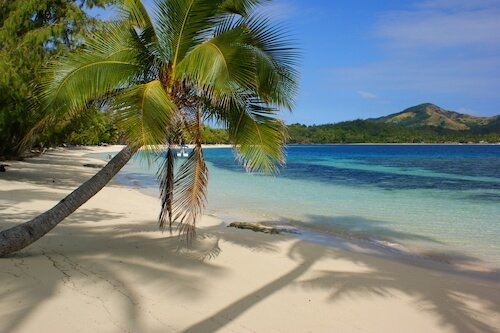 Fiji
FijiUseful Resources for Oceania Facts:
- New Zealand Tourism. "Aoraki Mount Cook National Park." 100% Pure New Zealand. Last accessed 15 December 2025
- New Zealand Government. "A Brief History." New Zealand Now. Last updated 30 July 2020. Last accessed 15 December 2025
- National Geographic: World Atlas for Young Explorers. Washington: 2010
- Earth Condensed. The World Atlas by Millennium House. 2009
Read more about Oceania
Read more about the other continents
Image Credits on Oceania facts page: Shutterstock.com and wikipedia commons
Return from Oceania Facts to Kids-World-Travel-Guide Homepage
More about Oceania
 Pacific Ocean Facts
Pacific Ocean Facts
Southern Hemisphere Countries
Did you like what you read?

|
Copy and paste into mails and onto your website, blog or Facebook page: <a href="https://www.kids-world-travel-guide.com/oceania-facts.html">Kids World Travel Guide: Oceania Facts for Kids</a> |

